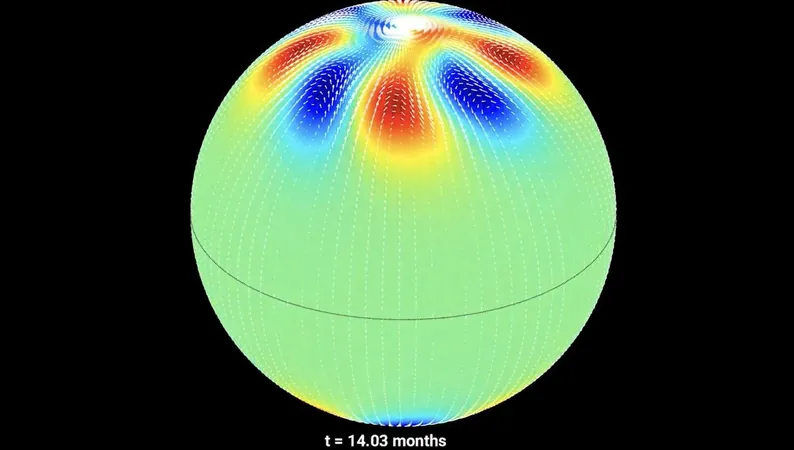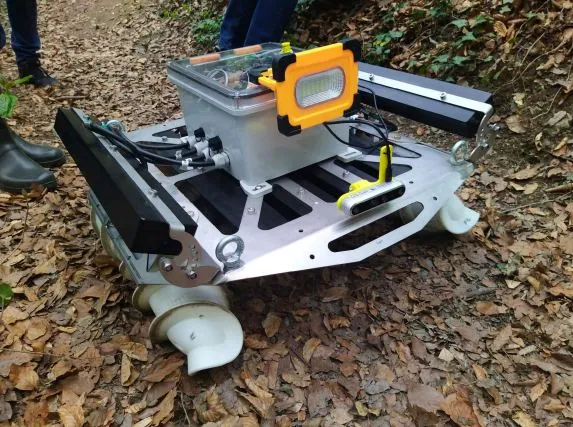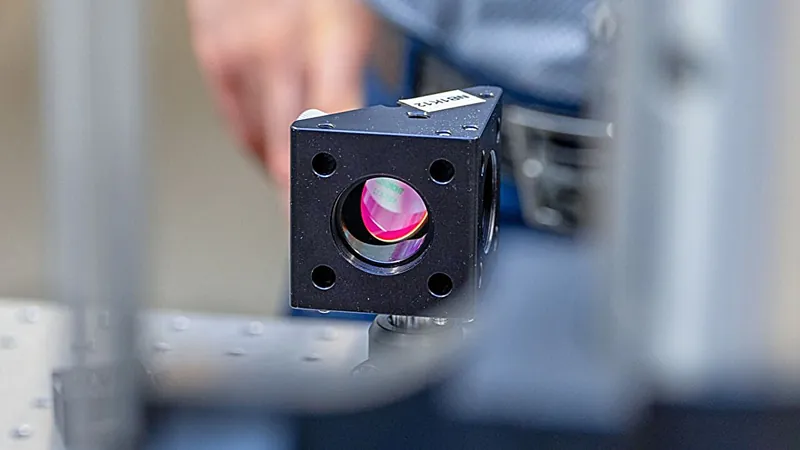
Are Swirling Vortices Hiding at the Sun's Poles? Discover the Shocking Truth!
2024-11-12
Author: Siti
Introduction
The Sun, our nearest star, remains a realm filled with mysteries, particularly when it comes to its poles – areas humanity has never directly observed. Most of our knowledge is derived from images taken from a frontal perspective, leaving scientists puzzled about the peculiar dynamics occurring at the Sun's extremities. Recent modeling studies have provided a stunning hypothesis: the Sun may experience polar vortices similar to those we see here on Earth, but with a cosmic twist.
Influence of Magnetic Fields
These staggering vortices are likely influenced by the Sun’s formidable magnetic fields, although the exact processes at work remain an enigma. Researchers have utilized advanced computer models to simulate how these magnetic fields might behave at the Sun's higher latitudes, leading to fascinating implications for solar science.
Insights from Research Scientists
Dr. Mausumi Dikpati, a leading research scientist at the National Science Foundation's National Center for Atmospheric Research, emphasizes the uncertainty surrounding the conditions at the solar poles but expresses excitement over these new findings. "This research offers a tantalizing glimpse into what we may find when we finally get the chance to observe the solar poles," she shared.
The 'Crush to the Poles' Phenomenon
One significant phenomenon influencing our understanding is the "crush to the poles." Unlike Santa's whimsical holiday escapade, this term describes the unique behavior of the Sun's magnetic fields. A field with opposite polarity arises at around 55 degrees latitude and heads toward the poles. This opposite field meets the pole's magnetic field during the solar maximum, a phase characterized by increased sunspot and solar flare activity (which, interestingly enough, we are currently experiencing).
Timing and Solar Missions
During these interactions, the pole's magnetic field can vanish, paving the way for a new magnetic cycle to begin, which typically occurs every 11 years. This means that precise timing is crucial for scientists aiming to delve into the activities at the poles. According to the model, if a spacecraft were to investigate now, there would be no swirling vortices to detect.
Scott McIntosh, a co-author of the study and vice president of space operations at Lynker, warns regarding the importance of timing for solar missions. "A new solar mission might arrive at an unfortunate time and miss observing these fascinating phenomena entirely," he cautioned.
Upcoming Solar Missions
In a thrilling development, scientists have already scheduled a mission designed to uncover these solar secrets. The European Space Agency’s Solar Orbiter, developed in collaboration with NASA, is set to be the first spacecraft to photograph and analyze the Sun's poles directly. After leveraging a gravitational assist from Venus on February 18, 2025, the orbiter's trajectory will ascend to 17 degrees relative to the Sun's equator, with further increases planned for subsequent years.
Implications for Solar Science
This groundbreaking mission promises to facilitate the first comprehensive examination of the Sun's higher latitudes, potentially revealing answers to many of the solar mysteries, including the existence of swirling vortices at the poles. By understanding both the vortices and the associated magnetic fields, we can enhance our preparedness for unpredictable space weather events that could have profound implications for Earth.
As McIntosh pointed out, "Currently, our insights are limited by our viewpoint. To make meaningful progress, we need comprehensive observations that will challenge our hypotheses and validate models such as these."
Conclusion
Stay tuned as we unravel more of the Sun’s secrets—who knows what shocking discoveries await us at the poles?




 Brasil (PT)
Brasil (PT)
 Canada (EN)
Canada (EN)
 Chile (ES)
Chile (ES)
 España (ES)
España (ES)
 France (FR)
France (FR)
 Hong Kong (EN)
Hong Kong (EN)
 Italia (IT)
Italia (IT)
 日本 (JA)
日本 (JA)
 Magyarország (HU)
Magyarország (HU)
 Norge (NO)
Norge (NO)
 Polska (PL)
Polska (PL)
 Schweiz (DE)
Schweiz (DE)
 Singapore (EN)
Singapore (EN)
 Sverige (SV)
Sverige (SV)
 Suomi (FI)
Suomi (FI)
 Türkiye (TR)
Türkiye (TR)